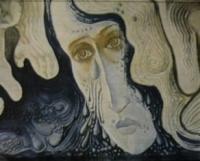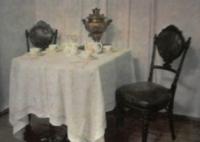Вы здесь
Museum Dostoevckiy in Semipalatinsk.


Tours in Semiplatinsk.
“There’s something about arriving in new cities, wandering empty streets with no destination. I will never lose the love for the arriving, but I'm born to leave”
Charlotte Eriksson.
Excursion to museum Dostoevckiy in Semipalatinsk.
The historic exploration tour around the city continues with а visit to the museum of literature in the Memory of Fyodor Dostoyevsky, 118 Dostoyevskiy Stгeet. The great Russian author spent the second stage of his exile here in Semipalatinsk from 1854 till 1859, after having spent five years already in the southern Siberian city оf Omsk.
Hls work Notes fгоm the House of the Dead is dedicated to that first period of his exile.
The years of exile connect Dostoyevski (1854 - 1859) with Semipalatinsk. In 1854 an exiled convict petrashevets F. M. Dostoevski finished the term of penal servitude in Omsk jail was taken to the ranks in Seventh Siberian line battalion in Semipalatinsk.
For writer the period in Semipalatinsk was the time of hard service as a soldier then non-commissioned officer and warrant officer. It was the time of slow and complicated coming back to life, literature after many years of forced silence.
For the first time Dostoyevski fell in love and years in Semipalatinsk were covered with information about Maria Dmitriyevna Isayeva. He met interesting people: withP.P. Semenov-Tyanshanski, A.Ye. Vrangel, recollected warmly friendship with Kazakh scientist and traveler Ch. Valikhanov.
History of the Literature – memorial house of F. M. Dostoyevski started from an old house where Dostoyevski rented a flat in the second half of XIX century after wedding ceremony with M. D. Isayeva.
In October, 1965 a part of the second floor of the house was emptied from residents for town library №15 by the decision of Semipalatinsk town executive committee. The manageress of the library Zinaida Georgiyevna Furtseva was a collector and curator of materials about the writer.
The base of the museum and the first fund were founded thanks to her efforts and trying.In 1971 the museum got the status of regional literature-memorial one when the world public observed the 150years from F. Dostoyevski’s birthday.
Projecting two-storey outhouse to the historical house was started by architects of «Semselproject» in 1972. Building works started in 1976. Modern building was built as a monument-book: broken line of walls are pages, the side of the building is a back.
In October 1977 building of the museum complex ended: it has a new building and old building of the museum and the monument from bronze «Ch. Valikhanov and F. Dostoyevski» by a sculptor D. Elbakidze.
The museum complex consists of:
1. The wooden two-storey house halved in the middle of XIX century. Peculiar dwelling building of petty bourgeois of old Semipalatinsk type. The area of building is 87, 7 square meters. The first floor outside was pargeted.
There are three rooms on the first semi-basement. There are 4 rooms designed in the interior of XIX century: a dining-room, a living-room, the study, bedroom 54 square m. Rooms are low-2, 45 m. Windows of the first floor have shutters.
Memorial board was placed in 1971.
2. A modern brick two-storey building in the right-angled form with broken walls on both sides connected by the vestibule with the house was built in 1976. It was faced with marble aggregate.
The back blank wall with the area of 153 square m. was decorated with four-color composition with graffiti called «Petersburg of Dostoyevski». The central façade pylon which is at the junction of broken walls, also was designed with four-color composition with graffiti called «Works» (32,3 square km).
The pylon at the entrance was marked with Dostoyevski’s bas-relief in cropper (7, 95 square km) and the name of the museum was written in big letters. The second floor of the building is a literary exposition about writer’s life and works.
The area of exposition is 296 squarem. The base of foundation of the museum is synthesis of architecture, monumental, decorative art and exposition. There is a rich collection in the museum which has 21581 units of storage; the main collection is 15547 units and scientific-auxiliary one is 6034 units of storage;
Acquisition was carried out in accordance with main themes of research of the museum: «Dostoyevski’s life and works», «Dostoyevski and our modernity», «Ch. Valikhanov. Lifeandworks», «Literarylocalhistory», «Dostoyevski and culture of Kazakhstan».
There are first editions of writer’s novels such as "Crime and punishment" (1867), "Teenager" (1876), "The Brothers Karamazov" (1881) and other works among pieces.There is a unique document in the museum – F. M. Dostoyevski’ sautograph, besides that there are rare lifetime editions of writer and his contemporary’s works, a large collection of books with autographs, memory literature, pre-revolutionary study of literature and etc.
Library in the museum has 14000 books and its acquisition started before opening of the museum. Books, magazines, rareencyclopedias here are a good base for scientists-researchers, students, pupils.
The years in Semipalatinsk are the years of deep and strong friendship between Dostoyevski and Ch. Valikhanov which let indelible track in spiritual worlds of them both. Most of writer’s predictions came true. Ch. Valikhanov is the first Kazakh scientist and enlightener, furthered development of geography, history, sociology, oriental studies, study of folklore and ethnography in Kazakhstan.
Museum pieces show the broadness of his interests. Ch. Valokhanov was the officer of Russian army, a direct descendant of Chingiskhan, a grandchild of Ablai, who was the last khan of the independent Kazakh khanate.
This friendship took its roots in Kazakh land. The best confirmation of this is foundation of Semipalatinsk museum of a Great Russian writer. The museum holds thematic excursions, lessons, lections, guest lections, literary-musical evenings, literary-game compositions for children, different contests among pupils of the town; new stationary exhibitions are opened every 2 - 3 months.
There is a literary-poetic unity «Irtyshskiye ogonki» under the museum. The museum was closed for repair in the autumn of 2008. A new exposition «F. M. Dostoyevski. Life and works» was opened in 2011.
There are 734 pieces. They are the first editions of Dostoyevski’s books, which were published in his lifetime, his copy-books for working, diaries, pictures and photos of characters from his works, writer’s portraits and etc.
There is a new modern TV set and player for listening audio excursions. Along with more than а hundred other members of the St.-Petersburg literary circle, Dostoyevsky was arrested and convicted after а figurehead of the Czar’s secret police had received reports on their discussions about Russian serfdom.
Literally in the last second before his execution, the verdict of the then in Russia already well known writer was changed into exile. Once in Semipalatinsk, Dostoyevsky received the support of Gоvеrnor Spiridonov and Ваron Wrangel.
The latter arranged that the author got his rank of officer and his civil rights back. This made life in exile а lot more comfortable for Dostoyevsky and he could live in relative peace. Не met his first great love here, married her and went to live in а two-story wooden house in the so-called Tatar neighbourhood.
This house, with а large building attached to it, today is home to the museum. А guilded tour is а rich eye-opener regarding the man behind the author Dostoyevsky. Next to the museum there is а metal statue of Fyodor Dostoyevsky and the young Kazakh scholar and travelling explorer Chokan Valikhanov. It is made in the memory of the many friendly encounters between the two men of genius here in Semipalatinsk.
Authority:
http://culturemap.kz and the guidebook across Kazakhstan . Authors Dagmar Schreiber and Jeremy Tredinnick. Publishing house "Odyssey".2010.
Photos
Alexander Petrov.







